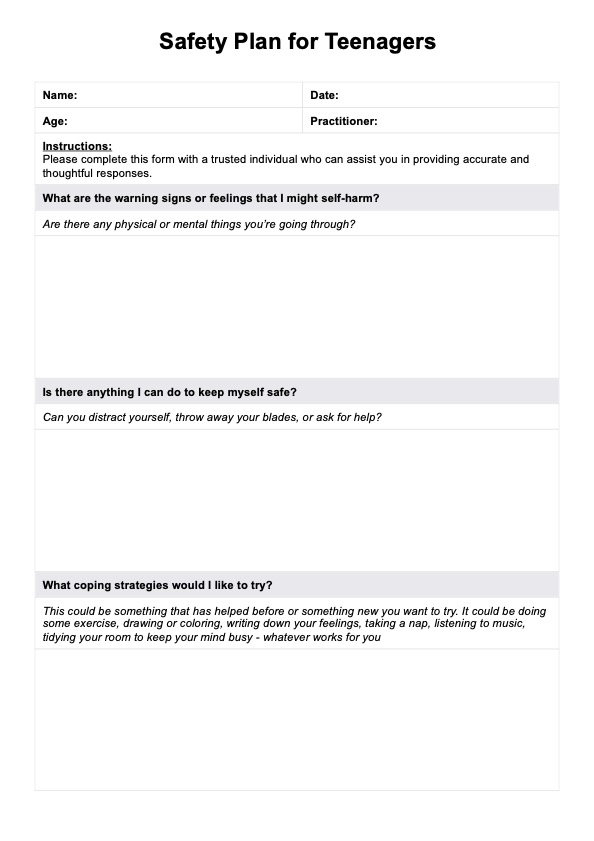Identify warning signs, list coping strategies, specify supportive contacts, include emergency numbers, and personalize to the person's needs.

Safety Plan for Teenager Template
Help teenagers create a safety plan to promote confidence in managing difficult emotions, seeking support, and staying safe during challenging times.
Use Template
Safety Plan for Teenager Template Template
Commonly asked questions
Identifying warning signs and actionable steps tailored to the individual patient are some of the most essential parts of a safety plan.
A safety plan template aims to prevent crises by providing a structured approach for coping with distress and accessing professional support.
EHR and practice management software
Get started for free
*No credit card required
Free
$0/usd
Unlimited clients
Telehealth
1GB of storage
Client portal text
Automated billing and online payments











